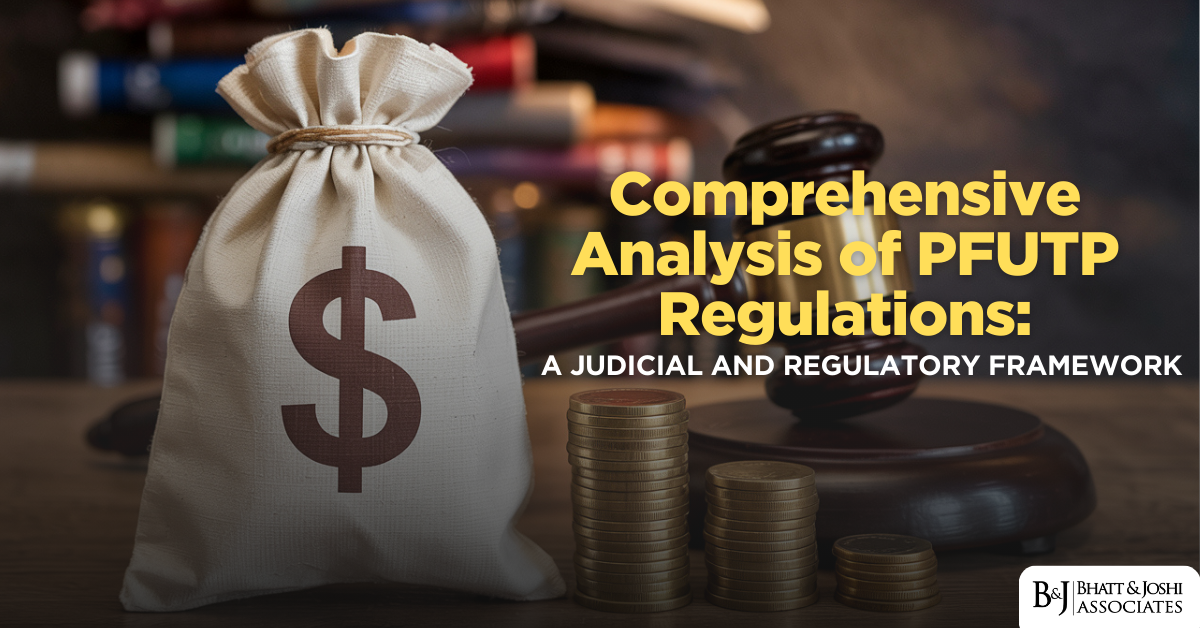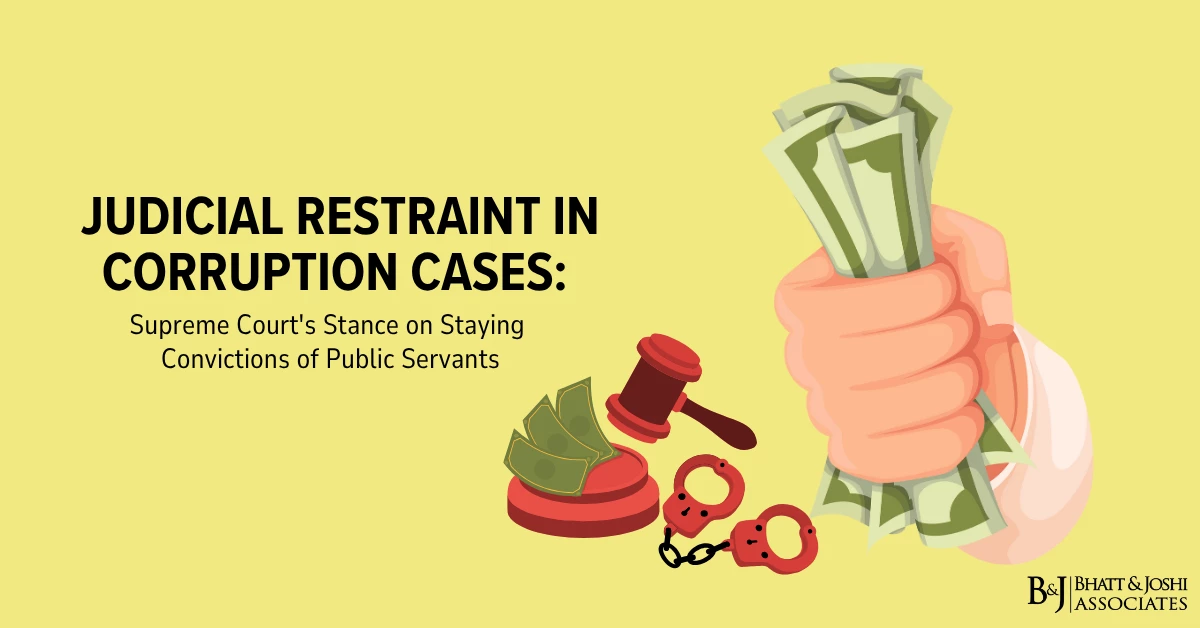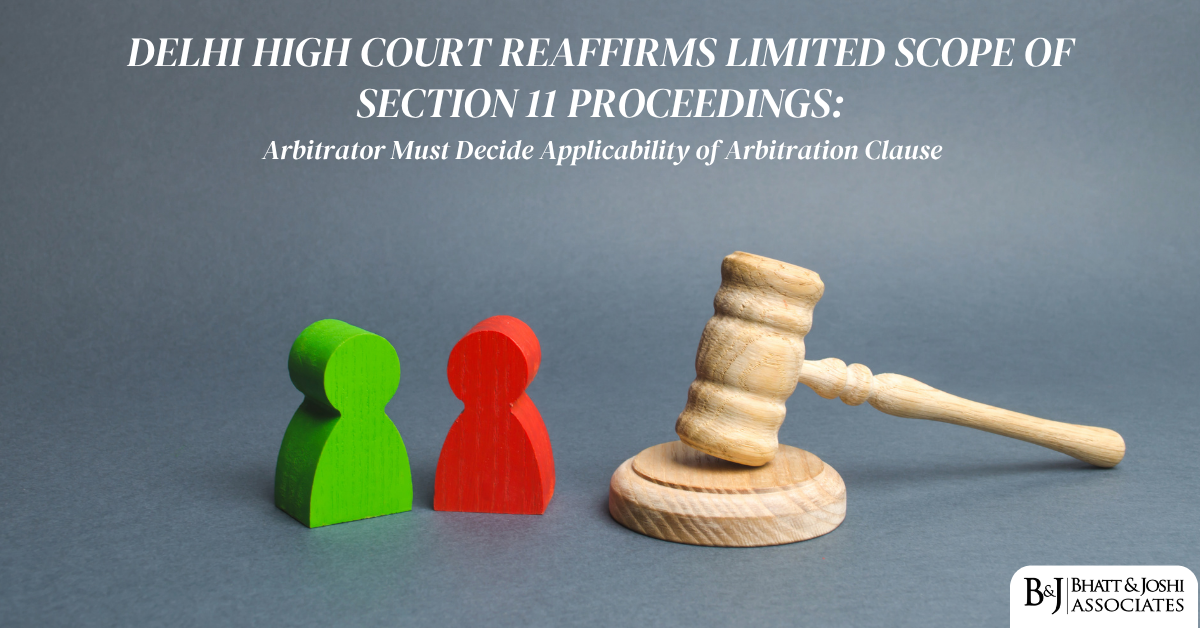Authored by: Aaditya Bhatt, Advocate
Bhatt & Joshi Associates

Introduction
Before delving into the specific judicial pronouncements on the SEBI (Prohibition of Fraudulent and Unfair Trade Practices relating to Securities Market) Regulations, 2003 (PFUTP Regulations), it’s essential to understand that these regulations represent one of the most significant regulatory tools in SEBI’s arsenal for maintaining market integrity. This report analyzes landmark judgments on PFUTP Regulations while providing definitional clarity on the entire framework and its implementation.
Regulatory Genesis and Framework: From SEBI Act to PFUTP
Legal Foundation and Evolution
The PFUTP Regulations derive their legal authority from Section 30 of the SEBI Act, 1992, which empowers SEBI to frame regulations. More specifically, Section 11(2)(e) of the SEBI Act mandates SEBI to “prohibit fraudulent and unfair trade practices relating to the securities market”. This provides the foundational basis for SEBI’s power to regulate market misconduct.
The current PFUTP Regulations were enacted in 2003, replacing the previous 1995 version. A notable change during this transition was the modification in the applicability of front-running provisions—while the 1995 regulations prohibited front running by “any person,” the 2003 regulations initially appeared to restrict it to “intermediaries”. This created interpretive challenges that were later addressed through judicial interpretations.
The regulations have undergone several amendments, most recently in 2019, which incorporated recommendations from the Committee on Fair Market Conduct Report. These amendments expanded the definition of “dealing in securities” and modified the list of prohibited activities to provide greater clarity.
Core Definitional Framework
The PFUTP Regulations are built around several key definitions:
- Fraud (Regulation 2(c)): Includes “any act, expression, omission or concealment committed whether in a deceitful manner or not by a person or by any other person with his connivance or by his agent while dealing in securities in order to induce another person or his agent to deal in securities, whether or not there is any wrongful gain or avoidance of any loss”. This broad definition encompasses:
- Knowing misrepresentation of truth or concealment of material facts
- Suggestions of facts that are untrue by those who don’t believe them to be true
- Dealing in Securities (Regulation 2(1)(b)): The 2019 amendments broadened this definition to include “acts which are knowingly designed to influence trading decisions of investors or any activities undertaken to assist such acts”.
- Prohibited Activities: The regulations outline specific prohibited practices under Regulations 3 and 4, covering a spectrum of activities that undermine market integrity.
Landmark Judicial Pronouncements: Shaping PFUTP Interpretation
The interpretation and application of PFUTP Regulations have been significantly shaped by judicial pronouncements. These judgments have addressed critical questions regarding the scope, applicability, and requisite mental elements for violations.
Supreme Court Judgments
- SEBI v. Shriram Mutual Fund (2006) This judgment established a fundamental principle that was later extended to PFUTP Regulations—that mens rea (guilty mind) is not an essential requirement for establishing violations of provisions of the SEBI Act. This decision was applied in subsequent cases to extend this principle to PFUTP Regulations.
- N. Narayanan v. Adjudicating Officer, SEBI (2013) In this case, the Supreme Court seemed to imply a need for mens rea in market abuse cases, describing them as involving “manipulative and deceptive devices” and giving out information “known to be wrong to the abusers”.
- SEBI v. Kanaiyalal Baldevbhai Patel (2017) This landmark judgment brought front-running by non-intermediaries within the prohibition of PFUTP Regulations. The Court provided a liberal interpretation of the regulations, holding that front running by any person connected to the securities market is punishable, regardless of whether they are intermediaries.
Significantly, the judgment clarified that “mens rea is not an indispensable requirement to attract the rigour of regulations 3 and 4, and the correct test is one of preponderance of probabilities”. This established a victim-centric approach, focusing on the harmful effects on investors rather than the intent of the violator. - SEBI v. Rakhi Trading (P) Ltd. (2018) In contrast to Kanaiyalal, the Supreme Court here defined market manipulation as a “deliberate attempt to interfere with the free and fair operation of the market,” with the term “deliberate” suggesting intention is relevant.
- T. Takano v. Securities and Exchange Board of India (2022) This judgment addressed procedural aspects of PFUTP enforcement, holding that the investigation report under Regulation 9 forms an integral part of the decision-making process and must be disclosed to the person to whom a show cause notice is issued. The Court noted that “a quasi-judicial authority has a duty to disclose the material that has been relied upon at the stage of adjudication”.
Securities Appellate Tribunal (SAT) Decisions
- Pyramid Saimira Theatre Ltd. v. SEBI (2010) SAT extended the Supreme Court’s ratio in Shriram Mutual Fund to all provisions of SEBI Act and PFUTP Regulations. The Tribunal observed that “the words indicated in the definition of ‘fraud’ under regulation 2(1)(c) of the PFUTP Regulations ‘whether in a deceitful manner or not’ are significant and clearly indicate that intention to deceive is not an essential requirement of the definition of fraud”.
- Shri Dipak Patel v. SEBI (2012) and Mr. Sujit Karkera v. SEBI (2012) In these cases, SAT observed that under the 2003 regulations, front running was prohibited only when carried out by intermediaries. This narrow interpretation was later overruled.
- Vibha Sharma v. SEBI (2013) SAT provided a liberal interpretation to front running, holding that it is punishable when conducted by any person connected to the securities market, regardless of whether they are an intermediary. This interpretation was later affirmed by the Supreme Court in Kanaiyalal.
- Ketan Parekh v. SEBI (2006) and Subhkam Securities Private Limited v. SEBI (2012) These judgments established that synchronized trades are not per se illegal, but become violations of PFUTP Regulations only when carried out with the intention to manipulate the market. This introduced a nuanced view on market activities that might appear suspicious but require manipulative intent to be deemed violations.
- Dolat Capital Market Pvt. Ltd. v. SEBI (SAT Appeal No. 11/2017) SAT affirmed that even indirect benefits or motives could bring front-running trades under scrutiny, emphasizing the prevention of any unfair advantage derived from privileged information.
The Mens Rea Dilemma: Intent vs. Impact in PFUTP Violations
One of the most contested aspects of PFUTP enforcement is the role of mens rea—whether intention is required for establishing violations. Judicial pronouncements have shown divergent approaches:
Pro-Intent Approach
Some judgments have emphasized the need to establish intent:
- S Gopalkrishnan v. SEBI (2011): SAT held that SEBI must prove parties acted “willfully with intent and knowledge” to induce investors wrongly.
- Ketan Parekh v. SEBI (2006) and Subhkam Securities Private Limited v. SEBI (2012): These judgments established that synchronized trades require manipulative intent to violate PFUTP Regulations.
Pro-Impact Approach
Other judgments have de-emphasized the role of intent:
- SEBI v. Kanaiyalal Baldevbhai Patel (2017): The Supreme Court held that mens rea is not indispensable for establishing PFUTP violations, and the focus should be on the impact on investors.
- Pyramid Saimira Theatre Ltd. v. SEBI (2010): SAT emphasized that intention to deceive is not essential under the definition of “fraud” in PFUTP Regulations.
Regulatory Resolution
The 2019 amendments to PFUTP Regulations attempted to address this tension by incorporating the word “knowingly” in several provisions (Regulations 2(1)(b), 4(2)(a), 4(2)(f), 4(2)(r), and 4(2)(s)). This modification aims to protect innocent investors from being implicated in violations due to inadvertent or accidental trades, while still maintaining a strong enforcement mechanism for deliberate misconduct.
Implementation Mechanism: From Detection to Penalization
Investigation Process
- Initiation of Investigation: Under Regulation 9, SEBI can appoint investigating authorities to investigate violations of PFUTP Regulations.
- Investigation Report: The investigating authority prepares a detailed report outlining its findings and submits it to SEBI[9]. As clarified in T. Takano (2022), this report is not merely a preliminary document but a thorough analysis compiled after exhaustive investigation.
- Show Cause Notice: If the investigation reveals potential violations, SEBI issues a show cause notice to the alleged violator under Regulation 10.
- Hearing and Disclosure: Following T. Takano, SEBI must disclose the investigation report to the person to whom the show cause notice is issued, as it forms the basis of the potential action.
Enforcement Powers
SEBI possesses extensive powers to enforce PFUTP Regulations, derived from Sections 11(1), 11(4), and 11B of the SEBI Act:
- Preventive Measures:
- Suspending trading of securities
- Restraining persons from accessing the securities market
- Suspending office-bearers of stock exchanges or self-regulatory organizations
- Asset-Related Measures:
- Impounding and retaining proceeds or securities under investigation
- Attaching bank accounts or other property of intermediaries or persons involved in violations
- Directing intermediaries not to dispose of assets related to transactions under scrutiny
- Remedial Measures:
- Appointing independent auditors for forensic audits
- Issuing directions for specific compliance measures
Penalties and Sanctions
- Monetary Penalties: Section 15HA of the SEBI Act provides for substantial monetary penalties for violations of PFUTP Regulations.
- Market Access Restrictions: SEBI can restrict violators from accessing the securities market or prohibit them from buying, selling, or otherwise dealing in securities.
- Administrative Sanctions: For regulated entities like intermediaries, additional administrative sanctions may be imposed.
Modern Evolution: Technological Adaptation and Expanding Scope
Technological Surveillance
SEBI has evolved its enforcement approach to address emerging challenges:
- AI and Data Analytics: SEBI utilizes artificial intelligence and advanced data analytics to monitor trading activity and detect complex manipulative patterns.
- Social Media Scrutiny: With the rise of “finfluencers,” SEBI has increased vigilance over stock recommendations and information dissemination on social media platforms.
- Intermediary Accountability: There is greater focus on the role and responsibility of market intermediaries in upholding market integrity.
Evolving Concept of Market Integrity
The interpretation of PFUTP Regulations has broadened to protect the holistic concept of market integrity:
- Beyond Price Manipulation: Judicial interpretations have expanded PFUTP’s scope to protect overall market fairness, transparency, and investor confidence, not just prevent price manipulation.
- Nature and Genuineness of Transactions: The focus has shifted to the nature and genuineness of transactions, with artificial market activities being viewed as inherently harmful regardless of their specific impact on prices.
- Gatekeeper Responsibility: As seen in cases like Price Waterhouse & Co. v. SEBI (related to the Satyam scandal), the reach of PFUTP Regulations extends to facilitators of fraud like auditors involved in false disclosures.
Conclusion: Balancing Investor Protection and Market Fairness
The PFUTP Regulations represent a complex and evolving framework designed to maintain market integrity while balancing various competing interests. From their inception through the SEBI Act to their current implementation through judicial interpretations, these regulations have adapted to address new challenges in India’s securities markets.
The judicial pronouncements have generally favored a liberal interpretation of the regulations, prioritizing investor protection and market integrity over narrow technicalities. The tension between intent-based and impact-based approaches continues to be refined through both judicial decisions and regulatory amendments.
As technology and market practices evolve, SEBI’s implementation of PFUTP Regulations continues to adapt through enhanced surveillance capabilities and proactive enforcement strategies. The underlying philosophy remains consistent: to protect the fairness, transparency, and trustworthiness of India’s securities markets, thereby fostering investor confidence and economic growth.
The regulatory framework, while complex, ultimately serves a clear purpose—creating a securities market where participants can operate with confidence that the rules are clear, enforcement is fair but firm, and the system as a whole maintains its integrity against those who would undermine it through fraudulent or unfair practices.
Citations:
- The Supreme Court’s Liberal Interpretation of the SEBI Regulations
- Market Integrity Under PFUTP Regulations – Bhatt & Joshi Associates
- Landmark Judgments on SEBI by Supreme Court & High Courts (2022)
- Role of Mens Rea in PFUTP Violations – Bhatt & Joshi Associates
- SEBI Amends the PFUTP Regulations – Finsec Law Advisors
- Supreme Court Judgment (Reportable) – 18 Feb 2022
- PFUTP Case Search – Indian Kanoon
- NSE Circular on PFUTP Regulations
- Regulatory Framework of PFUTP Regulations – Anti Corruption Team
- SEBI Meeting File – October 2020
- T. Takano vs. SEBI – Indian Kanoon













